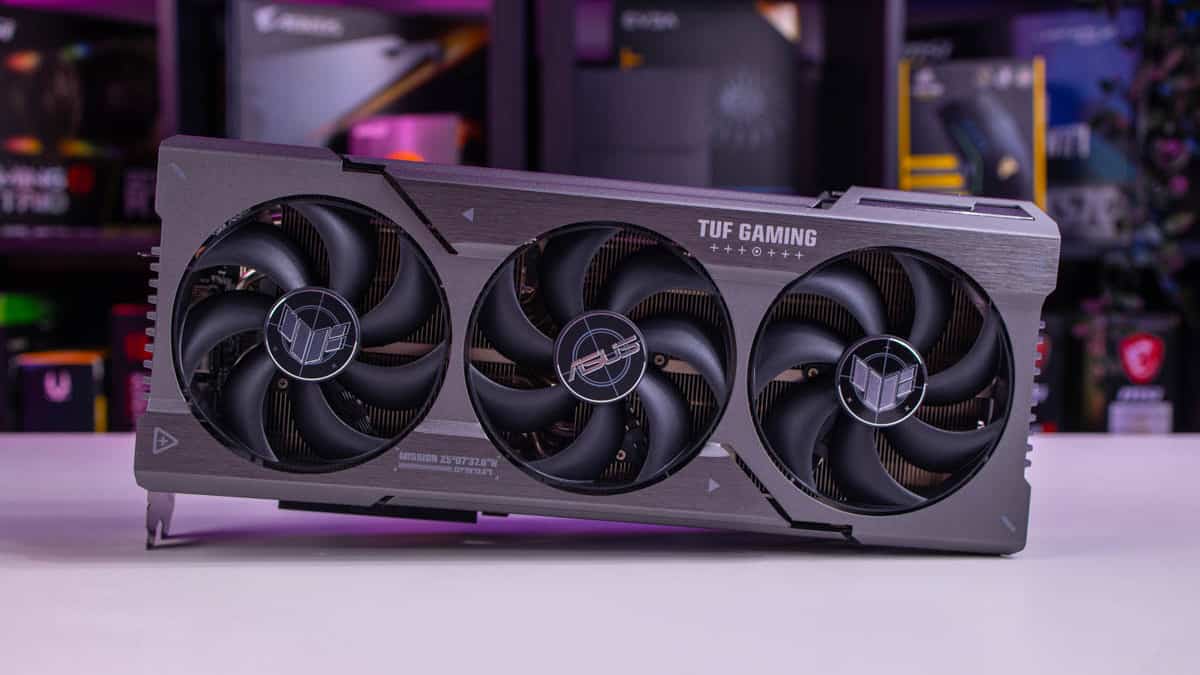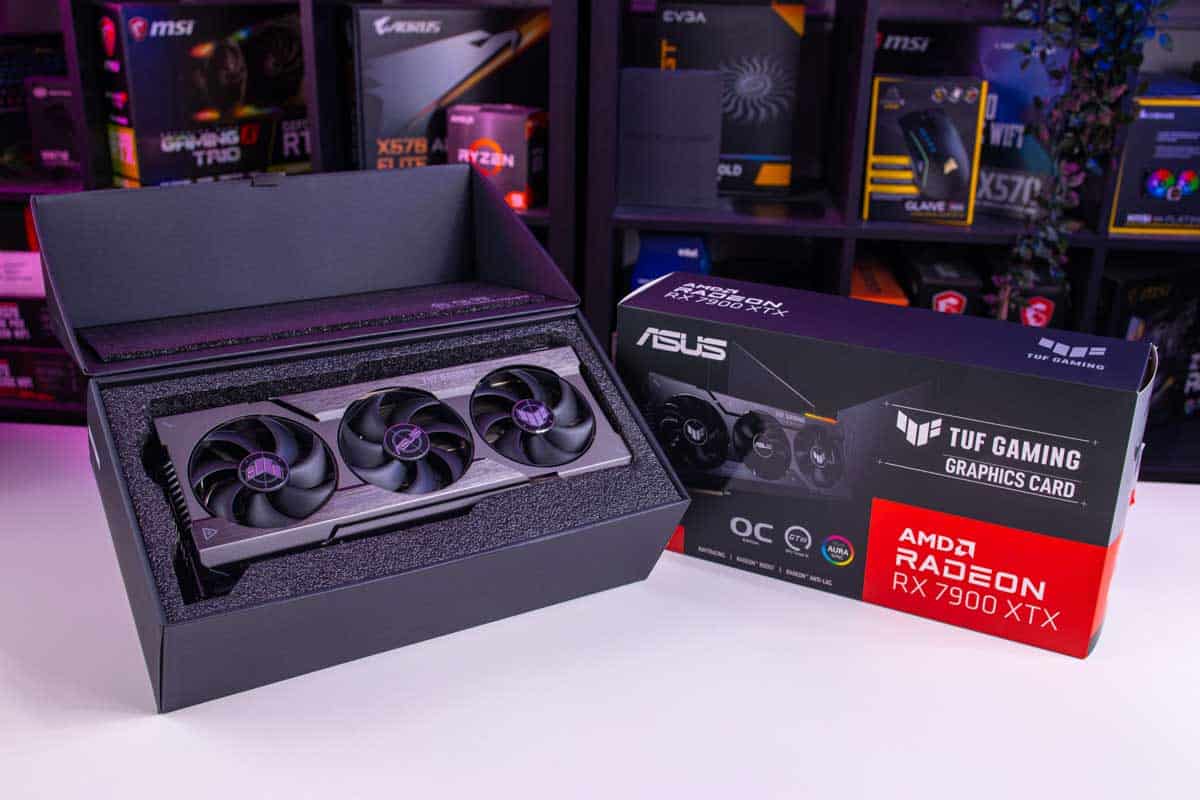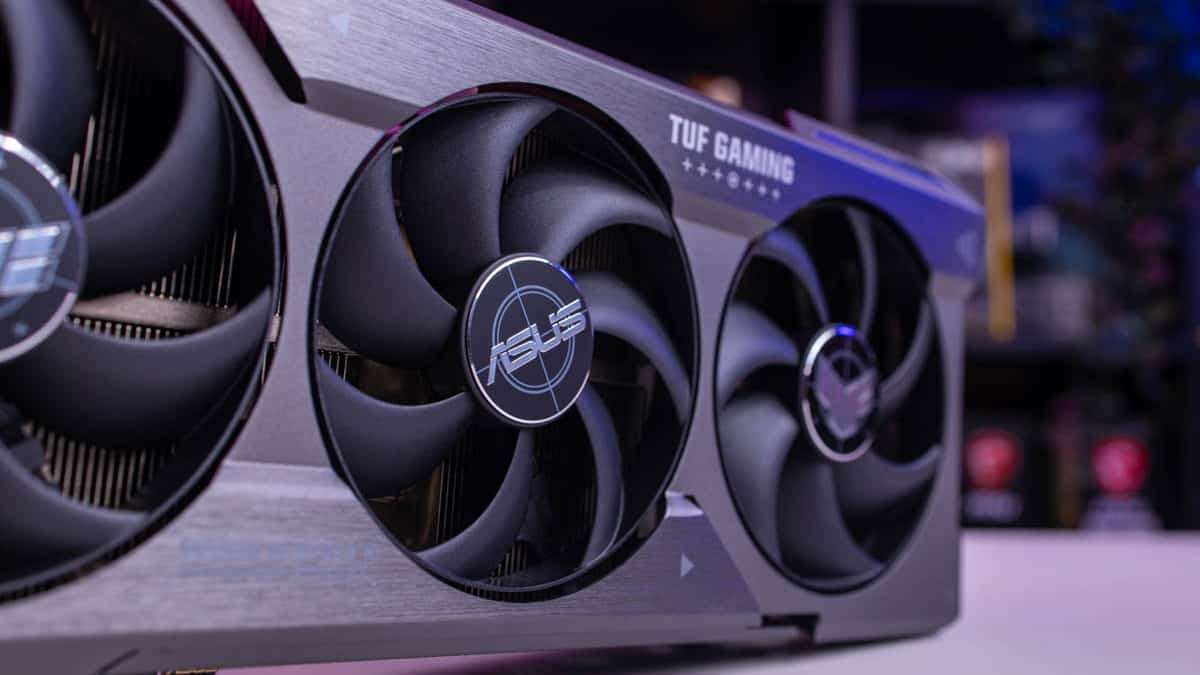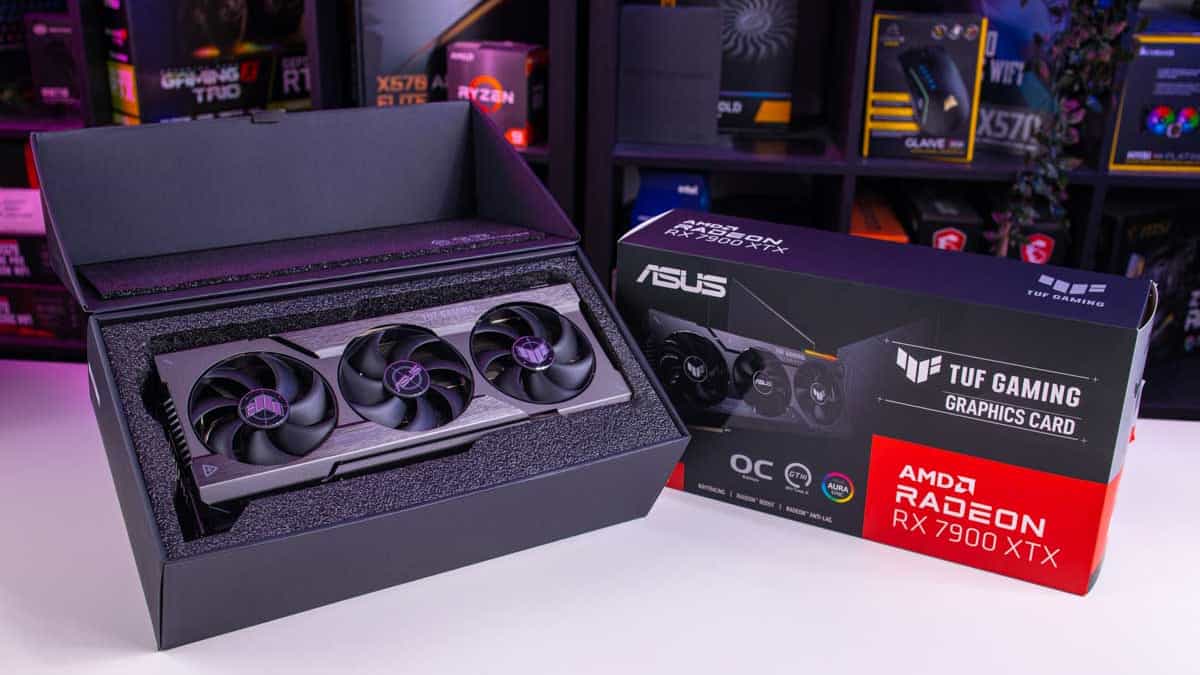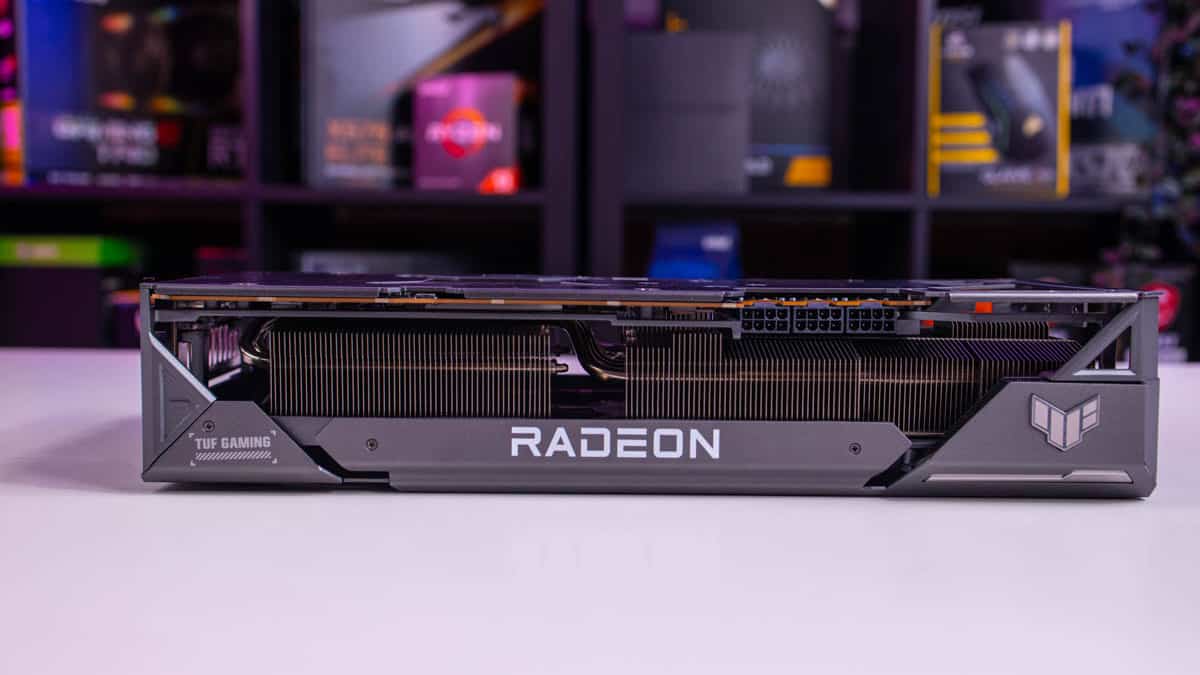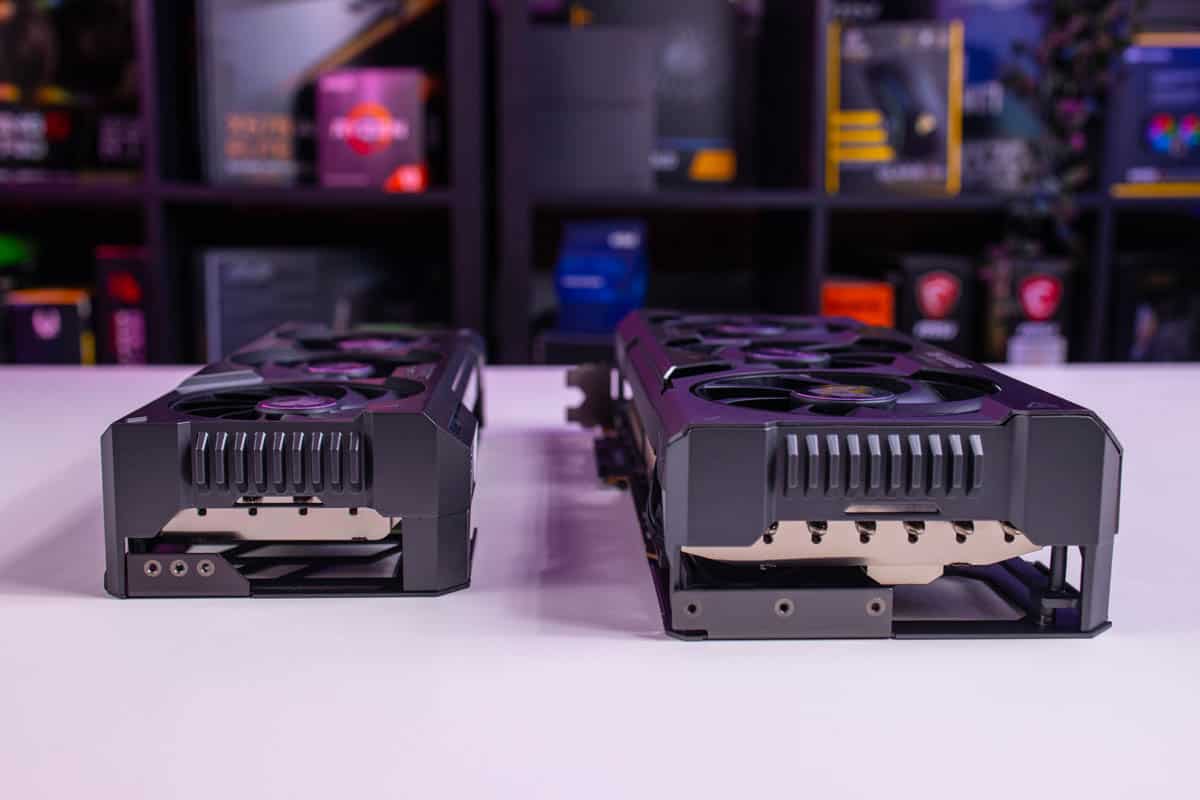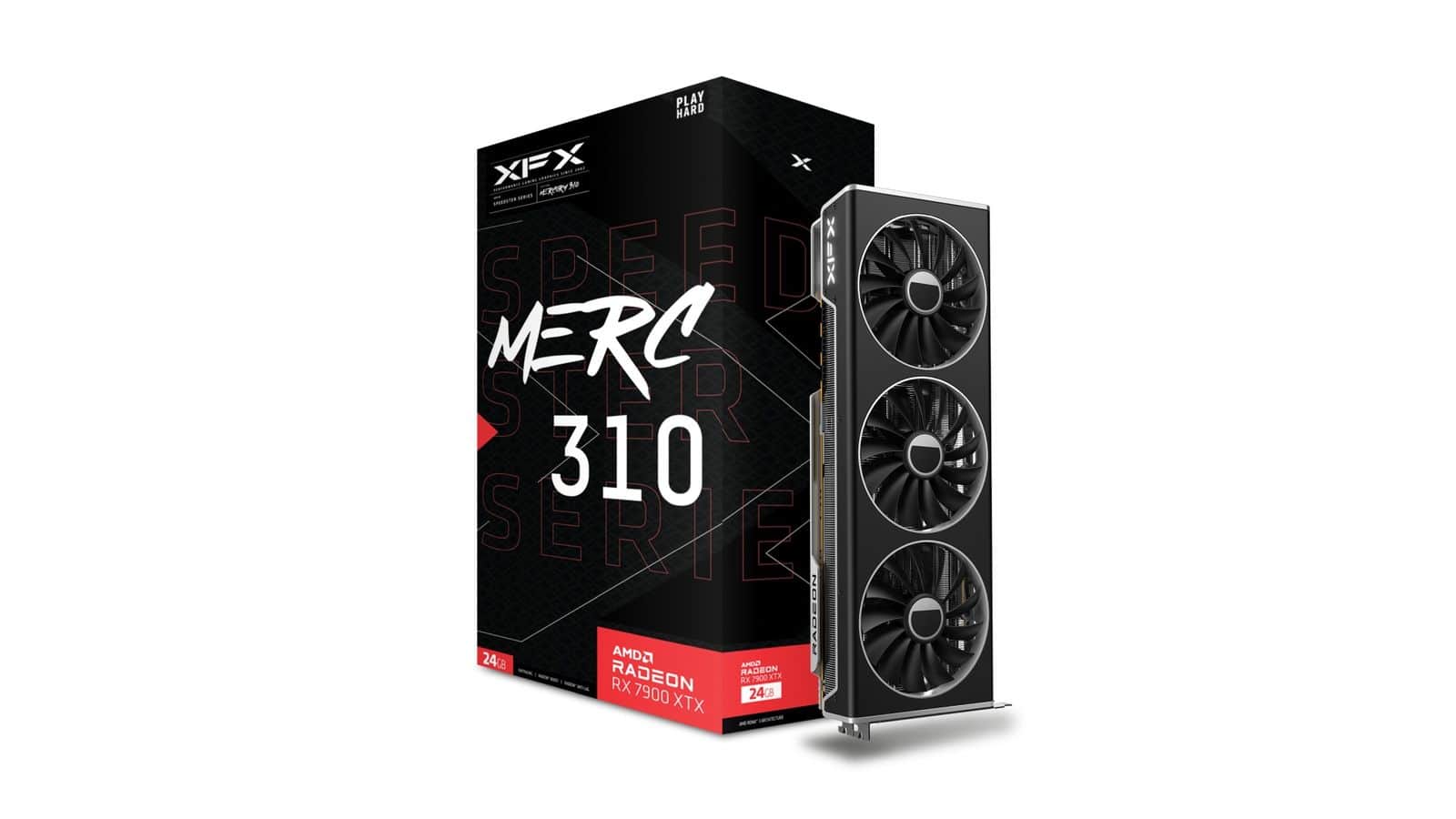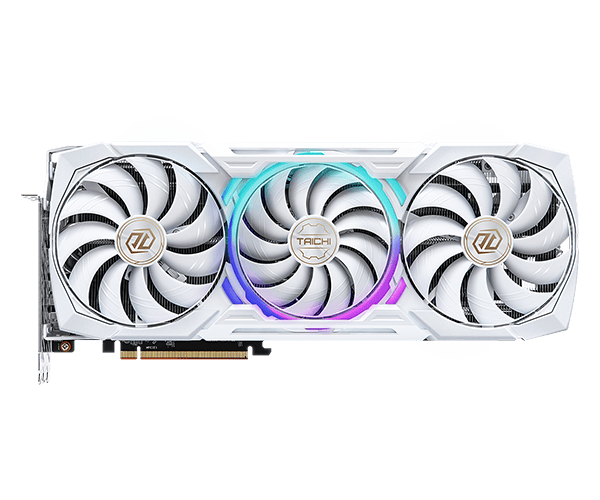Best RX 7900 XTX GPU in 2025 – our top picks
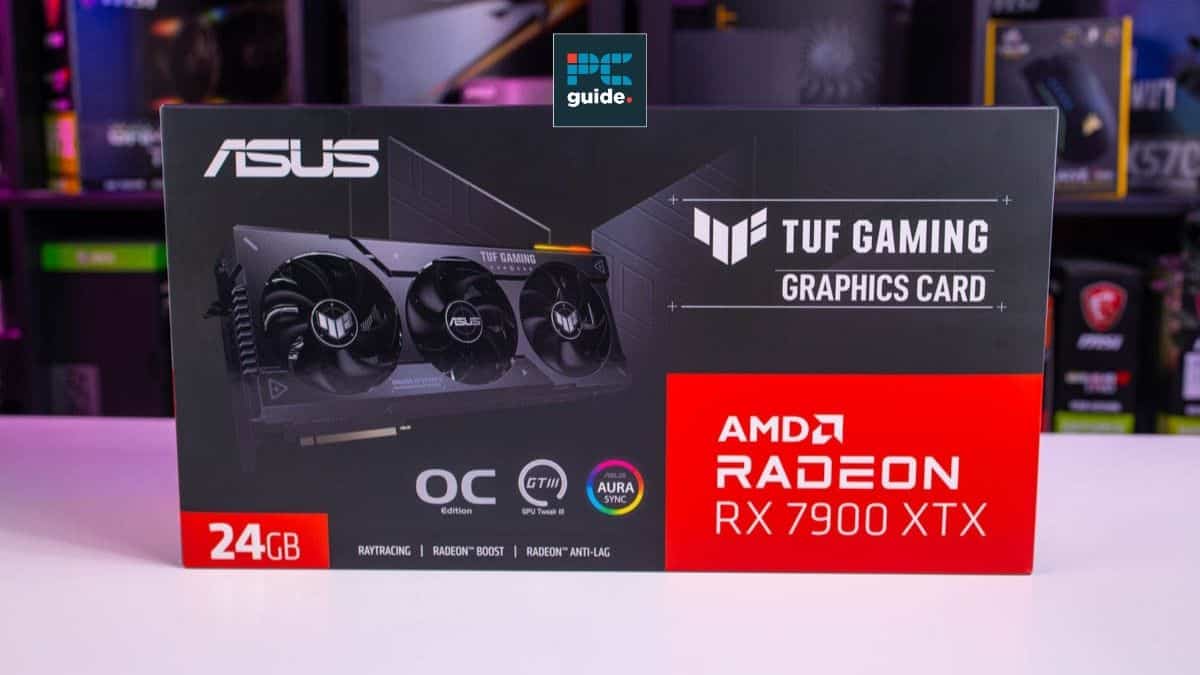
Table of Contents
If you are looking for the best RX 7900 XTX graphics card to add to your PC build, then we have you covered right here.
If you compare some of the best GPUs available now, then you’ll know that the AMD Radeon RX 7900 XTX graphics card stands as a titan, rivaling some of the top Nvidia cards. This is a top-of-the-line graphics card from AMD. It’s very powerful for tasks like gaming and video editing, beating out even other AMD cards and competing with Nvidia and Intel options. In our review, we found out that the card excels in 4K as well as 1440p gaming if you pair it with the right components.
This article delves into finding the best RX 7900 XTX GPU, uncovering its nuances, exploring its features and considerations, and how to discern the best variant for your needs. Built for high-end performance rigs, these graphics cards are tailored to synchronize seamlessly with the most demanding units, offering a visual spectacle like no other.
-
Best RX 7900 XTX GPU
ASUS TUF Gaming Radeon RX 7900 XTX OC
- GPU: Navi 31
- Stream Processors: 6,144
- VRAM: 24GB GDDR6
- Memory bus width: 384-bit
- Bandwidth: 960 GB/s
- Base clock speed: 1,929 MHz
-
Best budget RX 7900 XTX
XFX Speedster MERC310 AMD Radeon RX 7900XTX
-
Best RTX 7900 XTX for overclocking
PowerColor Red Devil Radeon RX 7900 XTX
- GPU: Navi 31
- Stream processors: 6144
- VRAM: 24GB GDDR6
- Bandwidth: 960.0 GB/s
- Memory bus width: 384-bit
- Base clock speed: 2029 MHz
-
Best RX 7900 XTX with RGB
ASRock RX 7900 XTX Taichi
- GPU: Navi 31
- Stream processors: 6144
- VRAM: 24GB GRDD6
- Bandwidth: 960.0 GB/s
- Memory bus width: 384-bit
- Base clock speed: 2119 MHz
How we picked the best RX 7900 XTX GPU
Choosing the best AMD RX 7900 XTX GPU is more than just looking at raw benchmarks and performance figures; it's about understanding the harmony between hardware and real-world applications. Our evaluation begins by examining the card's architectural efficiency, the balance between power consumption, and next-generation performance output.
Another pivotal consideration is compatibility and user experience. We analyze user feedback, looking for patterns that might indicate potential issues or highlight exceptional performance. Factors like driver support, software enhancements, and the card's adaptability to different systems play a crucial role.
Maybe this GPU is a bit too out of your price range. Luckily, we've got the best budget GPUs that can help you nail down your dream PC build. For those looking for an overall guide, we also have the best graphics cards in the market available. Be sure to check them out.
As we begin to break down the different variants of the AMD graphics card, we thought it best to include our own take on the original product so that you know exactly what you are getting yourself in for when purchasing. Our review includes a summary of price, specs, and performance comparisons, which should help determine if the GPU is suitable for you, and you can refer to how we test GPUs for the full details of our process. In summary, while this AMD beast is impressive on its own, pair this card with a CPU (such as Ryzen or Intel). Luckily, we also have a dedicated article on best CPUs for the AMD RX 7900 XTX. It is truly one of the best GPUs in the current marketplace, excelling at 4K performance and at 1440p visuals.

- GPU: Navi 31 die
- Stream processors: 6,144
- VRAM: 24GB GDDR6
- Bandwidth
- Base clock speed: 1,929 MHz
- Boost clock speed (OC Mode): 2,615 MHz
- Excellent overclocking potential
- High-quality build
- Effective cooling design
- Physical restrictions due to larger size
- Higher priced model
- OC requires tinkering
To kick things off on the technical front, ASUS's TUF Gaming variant is genuinely a powerhouse. Core clock speeds start at a robust 1,895 MHz, cruising up to a stellar 2,565 MHz on boost.
Couple that with its 6,144 stream processors and a whopping 24GB of GDDR6 memory, and you've got yourself a graphics card that's ready to take on any modern game or application. This is a GPU built for creators. Its dimensions demand respect, so make sure your chassis is up to the task. And, as is typical with these high-performing cards, a solid 850W PSU will ensure things run smoothly.
The TUF card isn't just about raw power, though. It's about optimized, fine-tuned performance. When overclocked, this beast can hit an average GPU clock speed of up to 3,199MHz. That's genuinely pushing the boundaries of what's possible with this GPU.
When overclocked, this beast can hit an average GPU clock speed of up to 3,199MHz.
PC Guide
Now, a powerful card needs an equally capable cooling solution, and the Asus card ensures that with axial-tech fans spin on dual-ball bearings. These fans aim to lower your GPU's temperature silently. Further, the card also features a heatsink, which helps to maintain temperatures.
The GPU also happens to be quite well-built. The card comes with military-grade capacitors that can withstand the heat of 105 Celsius for about 20,000 hours. Plus, the GPU is bundled with a card holder, which prevents sagging. As far as aesthetics are concerned, the GPU has Aura-compatible ARGB lighting on the shroud, so you can customize it as per your taste.
What users say
On Amazon, the ASUS TUF Gaming Radeon RX 7900 XTX OC has a 4.4-star rating, and over 300 people have reviewed it. In the reviews, most customers mentioned that they were satisfied with the quality, performance, and price-to-performance value of the GPU. “If you are gonna get a high-end graphics card, I personally believe this is the best value you can get. It offers remarkable 1440p and 4K performance with blazing fast frame rates with room to spare,” one of the customers said in a review. A few customers said that the card was big, so make sure you have a suitable case.
- GPU: Navi 31
- Stream processors: 6144
- VRAM: 24GB GDDR6
- Bandwidth: 960.0 GB/s
- Memory bus width: 384-bit
- Base clock speed: 2075 MHz
- Boost clock speed: 2617 MHz
- Budget-friendly
- Slim, under a 3-slot design
- Strong ray-tracing and FPS count
- Basic plastic build
- Limited airflow
- Lacks premium features
Diving straight into the tech talk, the XFX Speedster MERC310 clocks in with impressive numbers for its price point. Boasting a core clock speed that can ramp up to 2,615 MHz in its boost mode and a base at 1,855 MHz, it's not lagging far behind some of its more premium cousins.
To keep the card going even under pressure, the GPU comes with double ball-bearing fans that promise better cooling efficiency and quieter operation. Further, these fans are said to have less friction, which increases the lifespan of the component.
Now, coming to aesthetics, the GPU has a simple design without the bells and whistles, but that's what makes it great for those who want to plug and play without breaking the bank.
PC Guide
Now, coming to aesthetics, the GPU has a simple design without the bells and whistles, but that's what makes it great for those who want to plug and play without breaking the bank. The plastic shroud and covered backplate might raise some eyebrows among the enthusiast crowd, but as a budget option, compromises were inevitable.
If you're the kind of gamer who's less about the RGB glow and more about the ray tracing and FPS count, this card is your jam. It might not win any beauty contests, but it'll definitely hold its own in the gaming arena. Just be sure you're okay with the build compromises and understand that while it'll run like a champ, there's a cap to how much you can squeeze out of it.
What users say
On Amazon, the XFX Speedster RX 7900 XTX GPU has an average rating of 4.6 stars, and over 10,000 customers have reviewed it. Most reviews mention that the customers were satisfied with the quality and performance of the GPU. They also noted that the XFX card has an efficient cooling system. “This graphics card is amazing. Plays any game at 1080p comfortably. I mostly play GTA 5 and i get 120 frames per second on average at 1080p very high settings and it stays cool,” one of the customers wrote.
- High factory boost clock
- Top notch cooling system
- RGB customization
- Occupies substantial space
- Requires three 8-pin connectors
- Needs 900W PSU
Starting with the specs, the PowerColor Red Devil version is a beast of a card. With a blazing boost clock speed of up to 2565 MHz and a whopping 24GB of GDDR6 video memory operating at 20.0 Gbps and 96 MB of Infinity Cache, this card is ready to tackle anything you throw at it. Moreover, the dual BIOS feature lets you choose between a focus on performance or lower noise levels.
Now, whether you are planning to overclock or not, having an efficient cooling system is a must. The card comes with dual ball-bearing fans, which are known to deliver silent cooling. Plus, you also get an intelligent fan controller that kicks in only when necessary, and a GPU direct-contact copper plate to make sure your card stays cool.
On the edge, the GPU has a “Flaming Devil Eye,” for which you can customize RGB lights to add some flair.
PC Guide
As far as aesthetics go, the card is primarily black with streaks of red in between. On the edge, the GPU has a “Flaming Devil Eye,” for which you can customize RGB lights to add some flair. Plus, the backplates on this card are swappable, so if you want to change the look of your card, you just have to buy a backplate that fits.
Now, coming to the size, the PowerColor Red Devil is a big card with dimensions that look like 13.7 x 5.79 x 2.87 inches. The card weighs abut 4.48 pounds. While this might require a little foresight in case planning, it's hard to complain when you look at the raw power, memory bandwidth, and cooling efficiency.
What users say
The PowerColor Red Devil AMD Radeon card has a rating of 4.4 stars and more than 1,000 reviews on Amazon. As per customer reviews, people were satisfied with quality, performance, and cooling. One of the customers wrote, “I bought the RX 7900 XTX to upgrade my gaming PC and I am very happy with my purchase. This card is a beast and can handle any game I throw at it with ease.” However, a few reviewers said that they had some problems with crashes.
- GPU: Navi 31
- Stream processors: 6144
- VRAM: 24GB GRDD6
- Bandwidth: 960.0 GB/s
- Memory bus width: 384-bit
- Base clock speed: 2119 MHz
- Boost clock speed: 2680 MHz
- Impressive factory overclock
- Gamer-focused RGB design
- Dual BIOS flexibility
- Some units have coil whine
- Large footprint
If you want an RX 7900 XTX graphics card that you can overclock, then we think that this ASRock GPU might check a lot of boxes for you.
To start with, the ASRock Taichi card is an ‘OC' edition, which means it can be overclocked. The reference card comes with a game clock speed of 2300 MHz and a boost clock speed of 2500 MHz. However, this card pushes both these speeds to 2510 MHz and 2680 MHz, respectively.
Further, for cooling, the Taichi card comes with three 110mm cooling fans, with the central fan spinning in reverse to lower the turbulence. In addition to this, the GPU also has an air deflecting fin to assist cooling.
It sports RGB lighting on its front, sides, and even the back plate, which you can customize with Polychrome Sync.
PC Guide
Now, the ASRock card is big on appearance, and you can tell that from its ‘gamer' aesthetic. It sports RGB lighting on its front, sides, and even the back plate, which you can customize with Polychrome Sync.
This card is on the larger side, but that size accommodates an exceptional cooling solution. And with dual BIOS options offering ‘Quiet' and ‘Performance' modes, you get to choose how you run this powerhouse. But given the efficiency of its cooling, ‘Performance' mode seems to be a no-brainer.
What users say
On Amazon, the ASRock RX 7900 XTX GPU has a rating of 4.1 stars. Most users wrote in reviews that they were pleased with the performance and quality. “Just like last generation, Asrock has again created a top tier AMD card that has the best PCB design on the market. To say the card is over-engineered is an understatement,” one of the customer reviews said.
Features and considerations
While getting a new RX 7900 XTX for your build, here are a few things to consider –
Overclocking
Now, this is a powerful graphics card, but some models allow you to push it even further through overclocking. This means manually increasing the clock speed of the GPU for better performance in games and demanding applications. The ‘OC Edition’ cards are the ones that let you push the limits. However, you need some technical knowledge to overclock, so do this only if you’re comfortable with it.
Cooling
As this AMD card is a high-end card meant for powerful builds, you will need an efficient cooling system to maintain temperatures. Most cards offer two or three fans for cooling. However, you should also look for vapor chambers, heatsinks, and heat pipes for even better cooling – especially if you’re planning to overclock. And if quiet operation is your priority, some manufacturers offer quieter fans at the expense of slightly higher temperatures.
RGB
If you want to add some flair to your PC build, then you might want to go for a GPU that has RGB lights. While shopping, look for GPUs with customizable RGB lights. Most Asus cards come with syncable RGB lights. However, if you don’t like RGB lights, you can go for non-RGB cards like some of the XFX Speedster models.
Is the RX 7900 XTX worth buying?
The RX 7900 XTX is AMD's testament to high-end GPU performance. If you're on the hunt for the best AMD has to offer, look no further. This GPU not only caters to those wanting to push their gaming boundaries but is also a boon for professionals needing hefty computational power. It's built for overclocking enthusiasts and is perfectly suited for demanding tasks, making it a worthy addition to any high-performance rig.

